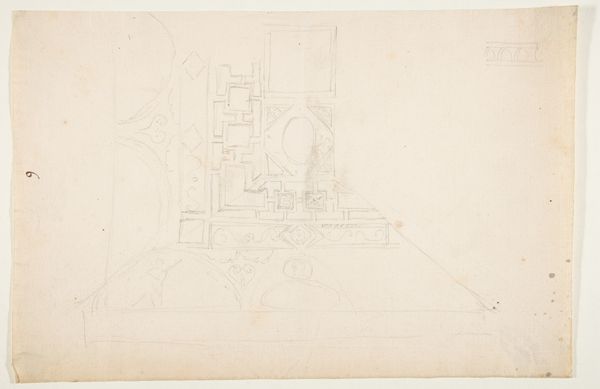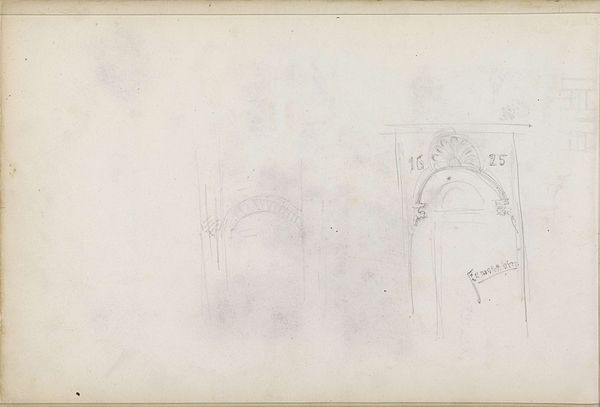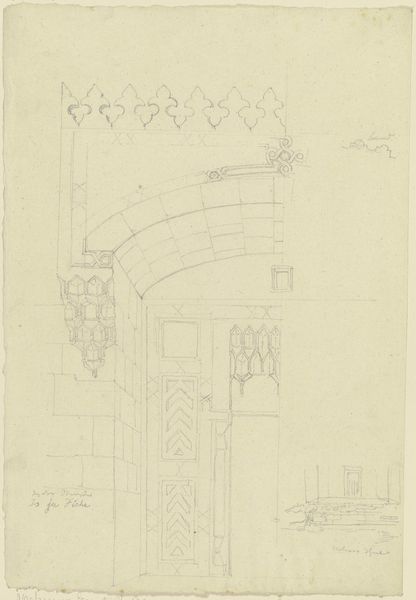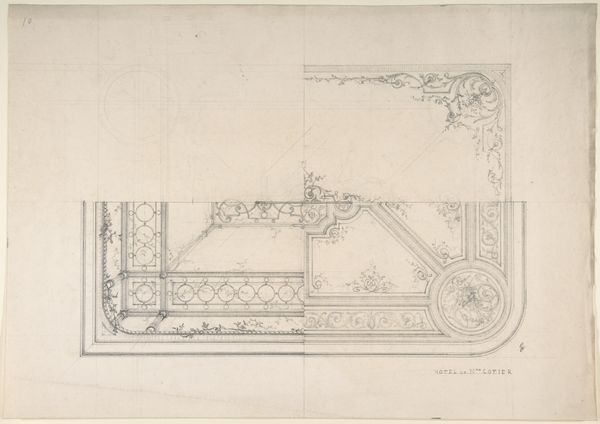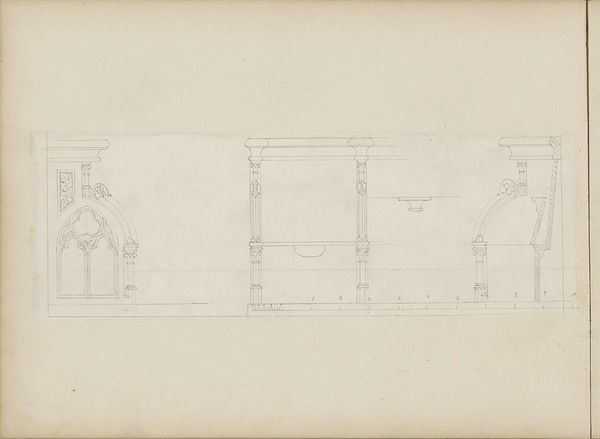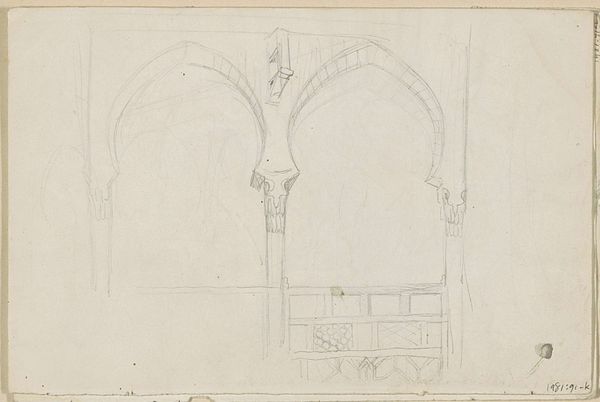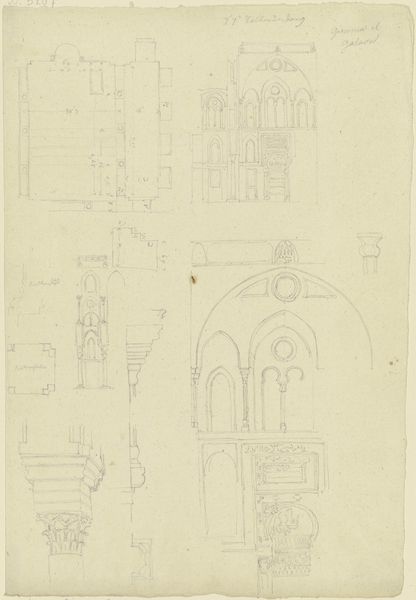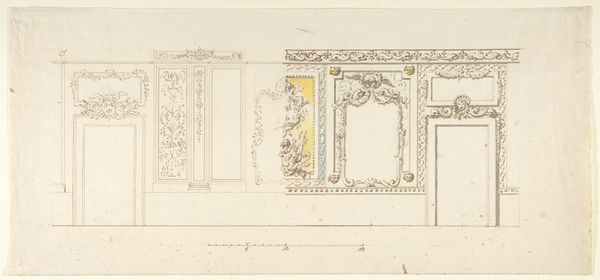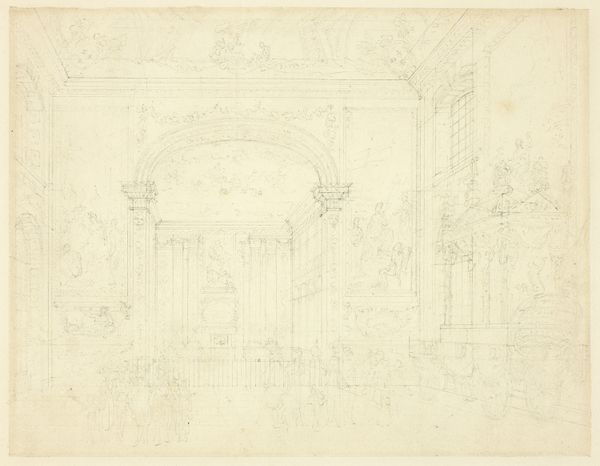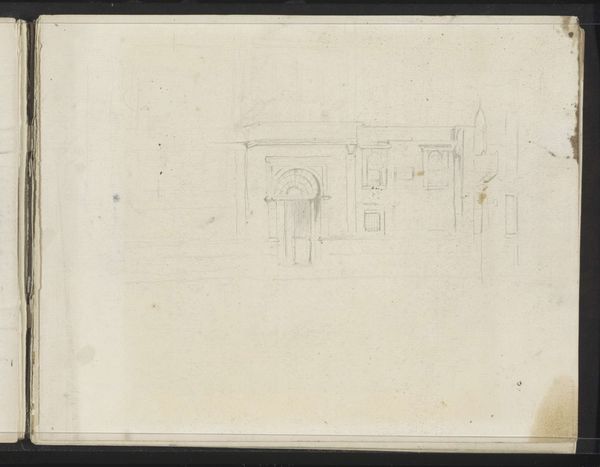
Verzierung einer rundbogigen Türöffnung sowie ein Biforium 1829
0:00
0:00
drawing, ink, pencil, architecture
#
architectural sketch
#
drawing
#
16_19th-century
#
asian-art
#
form
#
ink
#
geometric
#
pencil
#
architectural drawing
#
line
#
architecture drawing
#
architecture
Copyright: Public Domain
Editor: This drawing, "Verzierung einer rundbogigen Türöffnung sowie ein Biforium" by Friedrich Maximilian Hessemer, made with pencil and ink in 1829, showcases meticulous geometric patterns. The precision in line work is remarkable. What do you make of the composition here? Curator: The drawing exhibits a fascinating exploration of form through line. Consider the interplay between the rounded arch and the rigid geometric infill. Hessemer emphasizes the inherent tension between organic and inorganic shapes. Editor: I see the tension, especially in how the curves of the arch are echoed, but also broken, by the straight lines within. It's a really interesting juxtaposition. Curator: Precisely. And note how the artist has used line weight and density to suggest depth and shadow, manipulating our perception of form. Observe also the relation between the decorative framing in the drawing's upper-left and the biforium displayed on the right. How are they similar? How do they differ? Editor: I think the symmetry and repetition are definitely connecting elements, but one is so much more ornate than the other. It feels like he's comparing two different levels of detail. Curator: Yes, indeed. Hessemer invites us to analyze how simple geometric forms combine to create more complex and evocative structures. His choices elevate simple lines into powerful communicators. Editor: I’ve never thought about architecture quite this way, deconstructing it to its basic visual components. Curator: By focusing on these intrinsic qualities, Hessemer encourages us to see architecture as more than mere shelter, and instead recognize the power of geometric vocabulary to define space.
Comments
No comments
Be the first to comment and join the conversation on the ultimate creative platform.


